What You Can Do To Help Save The Insects.
You can create small ecosystems in your garden to give the insects somewhere to live. They are lacking habitat in so many places. They need refuges in chemical free places where they can live and breed so that when (hopefully when) the massive agriculture is overturned we have pockets of them surviving that can go back out and repopulate the scoured environment.
1. Don't use chemicals, pesticides, herbicides or anything if at all
possible.
If you really think you must spray then please read out chemical use
guidelines first.
2. Don't be afraid that these insects are going to come and pester
you.
For the most part insects don't bother you. They are busy leading their
own life and don't really care about you at all just like you don't
care about them. If you give them some nice flowers to get nectar from
and some places for them to make a home and raise their babies then
they will leave you all alone and not bother you. True there are a few
that will come to you but these are the blood suckers like mosquitoes
and biting flies. This is an extremely small percentage of insects.
Most want plants and flowers not you. So don't persecute the flower
lovers because a few other want to bite you.
3. Don't be afraid of moths.
Some people freak out with moths, perhaps because the fly at night and
you don't see them coming. For the most part our experience with moths
is when one flies out of the darkness and crashes into us when we are
outside for a barbecue or party. This can be startling but the moth
is just confused and that's your fault, not the moths. Moths navigate
by light, mostly moonlight. Then you come along and put out a big bright
light and the poor thing is totally confused. Its like you messed with
his GPS. You would not like to be killed just because your GPS sent
you the wrong way, so don't kill the moth.
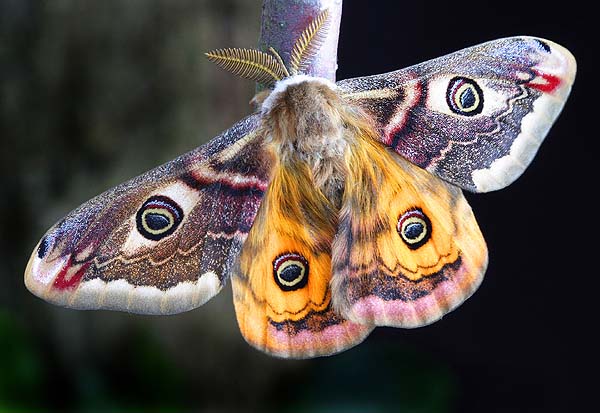
4. Grow plants that are friendly to pollinators and other insects.
This is the really easy part that also makes your garden look so much
nicer, prettier. Grow plants that will encourage pollinators to come
to your yard. Floral Encounters has a large range of different ones
for you to choose from. Many have lovely flowers, others are less attractive
to people but far more attractive to insects. Don't focus just on bees
there are many other insect pollinators and we want to keep up as many
as possible so grow plants like dill, fennel and other plants with the
same kind of umbel like flowers to encourage them. The adore these plants.
The really nice thing about this is that most of these plants are perennials
and they are pretty tough. So once you have them planted they take care
of themselves mostly and you can just enjoy the flowers and watch the
pretty butterflies and other insects and be proud that you are helping
the ecosystem.
5. Design a simple garden with perennials that insects will love.
Its really not that hard. Instead of having that great big bleak flat
green yard put in some perennial flowers around the edges, maybe make
a curing bed of them in the center of the lawn. Put things where you can
see them from the house, that way you can enjoy all the beautiful flowers
and appreciate the pretty butterflies from inside when it gets really
hot outside. There are plenty to choose from and it will actually make
LESS yard work in the long run rather than more.
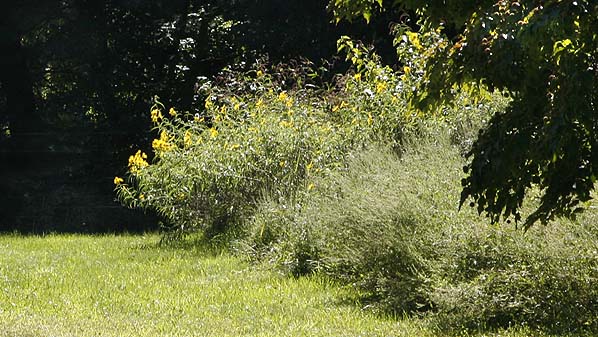
6. Grow a wide range of plants.
Don't just grow one or two different ones grow a whole bunch. That way
you have as much diversity as possible. Often what draws an insect to
your garden is not what it finally ends up with. If you see a nice piece
of clothing in a shop window it can draw you into the store. Once you
are there you find a whole bunch of other interesting stuff and end up
buying something else entirely! It's the same with insects, they may be
attracted on one flower but then check out your yard and find it's a perfect
home for their young ones to live in.

7. Don't just focus on pollinators you can see.
You need breeding insects if you are going to help them survive so just
feeding them nice flowers is not enough you need to provide plants that
they can lay their eggs on, that the larva can eat and places for them
to hide out. There are several things you can do here.
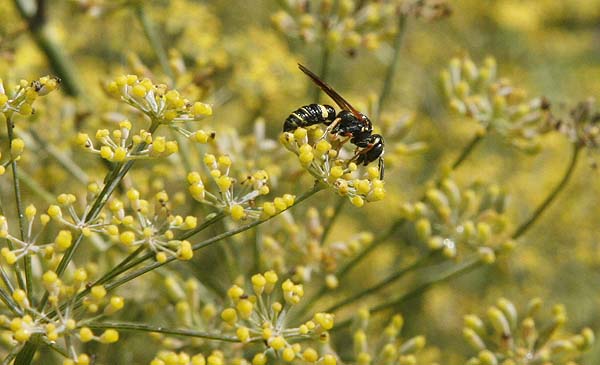
8. Plant for caterpillars.
Caterpillars can be a problem on some vegetable crops and even some ornamentals
there is no doubt of that. However if we love butterflies, we can't have
them if we don't have caterpillars first. So if you pick off and kill
the caterpillars then you are killing the butterflies. Many people don't
realize this and think of them as ugly bugs. At one tour of our farm a
lady was pointing disgustedly at the caterpillars on our fennel and stating
she always picked them off and killed them. Then a swallowtail butterfly
came past and she paused to say how much she loved them. I had to explain
that this was the same animal and if she killed the caterpillar then there
was no butterfly.
So try and be nice to caterpillars. Grow more plants than you need. Swallowtails
love fennel and rue and will eat plants to the ground if they get the
chance so make sure you have enough plants for them to eat and some left
for yourself as well. The same applies to tomatoes, if you grow them you
have most likely seen the large green hornworm caterpillars that will
eat the plant to the ground. However most people have not seen the beautiful
moth that it turns into. So grow more tomato plants than you need and
leave a few caterpillars to grow into beautiful moths. Don't remove parasitized
caterpillars (ones that have stuff hanging all over them, as this will
remove another predator who is killing your pests).
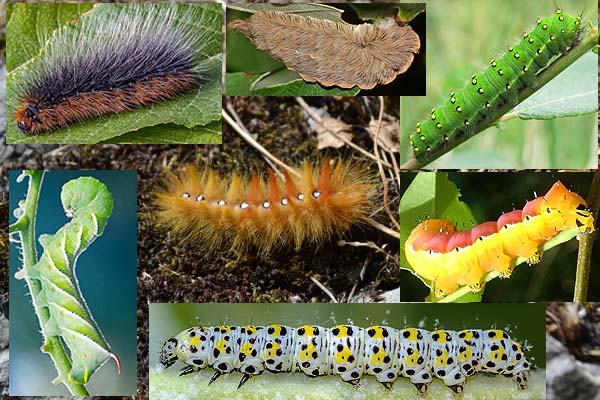
9. Plant for other insect larva too.
While a lot of times we can't see other larva, many are very good at camouflage
so they don't get eaten so they are easy to miss. However a lot of insects
lay eggs no plants and the only thing you notice is a few holes in the
leaf or something. The best way

10. Plant so that you have flowers for the longest time possible.
Insects don't just exist in summer they are there all year. We often
don't see them much at other times because their numbers are lower.
They come of out hibernation and have to build nests, have babies and
build up their families. To do that they need food. So having plants
that flower from early spring right up until the killing frost is the
best solution. Start with early flowering bulbs and flowers then check
to see when plants flower so you can build a chain of flowers throughout
the whole season. This will give your insects something great to feed
on and make a really wonderful flower garden for you too. See our flower
chart for assistance.
11. Don't cut everything down in the fall/autumn.
Its tempting to want to sanitize the garden before winter comes but this
is the worst thing you can do. Having spent all summer encouraging the
insects to come to your yard you want to keep them there. If you put in
the right plants they will have bred and laid eggs ready for next year.
Or they will have bedded down for the winter. So the last thing you want
to do is remove all the material they have laid eggs in or hidden it.
Leave perennial plants standing through the winter. These are the places
that the insects will be nesting or hiding. If you clear all this away
then you destroy everything you built the year before. Leaving plants
rather than cutting them down also gives a lot more interest in the winter
rather than just a large desolate blank space. It makes the garden still
seem more wild and alive even in the bleakness of winter. Cut plants down
just before they are coming up in the spring. If you see any obvious egg
masses leave them behind or wedge them into another plant close by to
allow them to hatch. Place all the cut material in a compost pile so that
any insects can still hatch out and rejoin your garden. Don't place it
in bags to be taken to the dump.
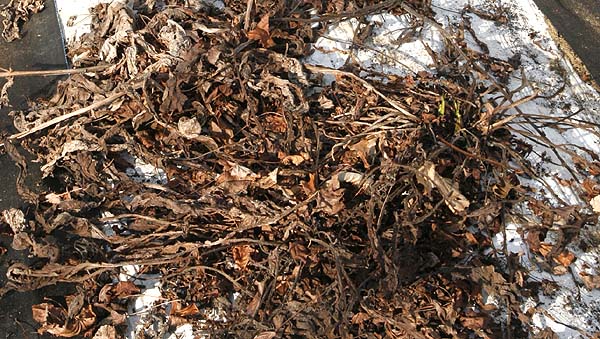
12. Dealing with annual plants for winter.
Annuals can be removed as soon as the ground is needed for new planting.
Leaving plants also allows for seeds to drop and create more plants
for you but also gives a natural food source for the seed eating birds
during the winter. If you don't want to leave annual plants to seed,
cut them down at the end of the season carefully shake the seeds into
a large box then pile the plant material up somewhere in a loose pile
so any insect eggs can hatch in the spring. Move all the material to
a compost heap and compact down in late spring. The collected seeds
can either be used to re seed your plants to a different area, or they
can be placed in your bird feeders for the enjoyment of the birds during
the winter months. Grow your own bird food!
13. Don't rake up all the leaves.
See your autumn or fall chores just got less. You don't need to rake up
all the leaves. If possible leave them under trees or at the sides of
your yard. Insects like to hide under leaves for the winter months. If
you have ever been visited by a flock of birds in winter you will see
them turning over all the leaves looking for insects to eat. They know
the insects live there too. If you grow ground covers never rake the leaves
out but let them sit. The plants will thank you for the extra compost
and the insects will appreciate the cover. If possible use the leaves
to mulch your flower beds or put under shrubs and trees. The benefits
both the plants and the insects. The more you can leave the more likely
that the insects will survive the winter and increase in numbers the next
year.
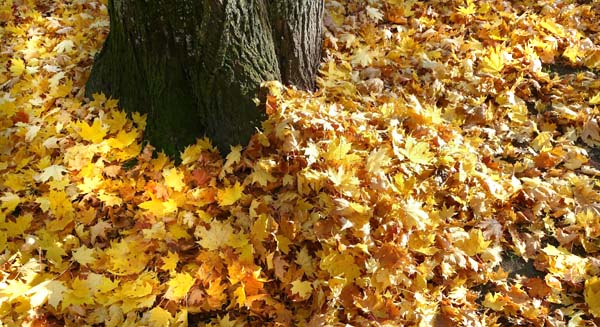
14. Don't try and have a perfect monoculture lawn.
Despite what stores like Sears say about the lawn being 'a badge of honor'
and other such marketing statements put out by lawn chemical companies,
growing a monoculture of just grass and nothing else is not natural. Its
not healthy for the grass and its not healthy for your soil or your garden.
The reason that lawns have so many problems is because they are grown
as single monocultures. That is why you need to put down so much lawn
fertilizer and grub killer and all the other things. Just stop wasting
your money on that. If the lawn has some weeds no matter. Once its mown
from a distance it still looks great. In fact many think it looks better
if it has a few flowers in it. Adding clover to your lawn will give it
all the nitrogen that it needs without you having to add any. Use a mulching
mower to return the material to the soil not remove it as much as you
can. All you need to achieve is a full ground covering of green, it does
not have to be grass. Bare patches and all weeds will need some attention
but once you have a good coating, just mow that. If possible replace a
lot of your lawn with perennial plants for the insects, then you cut your
mowing chores down too!
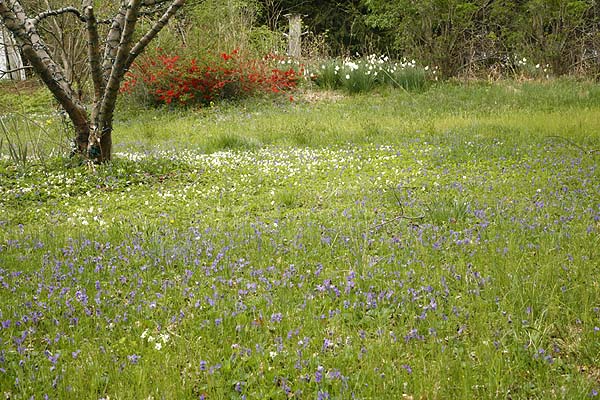
Now you have your own insect sanctuary.
Anything that you can do with your yard will help. We need as many people
as possible to put in plants to give these little guys somewhere to
live until such time as we have a world that is friendly to them again.
If you plant a garden such as this then your garden work will decrease
greatly. Much less mowing, little or no spraying and the insects will
take care of themselves. If you choose to plant a vegetable garden you
will most likely find that the number of pests you get will be much
reduced as the predatory insects will take care of any pests you have
and you wont have to bother at all.
Less leaf raking in the autumn/fall. Just a little bit of plant maintenance
in spring and all you have left to do is sit back and enjoy your newly
improved garden.
My thanks to the great photographers at Pixabay for most of the images in this article.
OTHER ARTICLES ON INSECT DECLINE AND HOW TO HELP
Lets save all the bees, not just the honey bees.
What a huge drop in insect numbers will mean to us
Some insects will survive the die-off.
Chemical Use Guidelines. Help to save the insects and the planet.
What you can do to help save the insects
Just buying organic is not enough to save the insects
References used in creation of these articles.
| Janice Hazeldine PhD is the owner and head grower of Floral Encounters an organic Medicinal Herb farm that is also a designated sanctuary for pollinators. |





